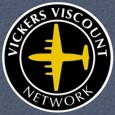Vickers-Armstrongs VC2 Viscount
1948 - 2025 - Introduction
The Vickers-Armstrongs Viscount was really born during World War II - at a time when things were going far from well and
few people were thinking much about civil aviation. To some people in 1942, it may have seemed strangely unrealistic of
the British Government to appoint a group of experts, known as the Brabazon Committee, to examine post-war requirements
for transport aircraft.
In their recommendations, however, lay the origin of an idea that was to develop into one of the most successful British
civil aircraft ever built.
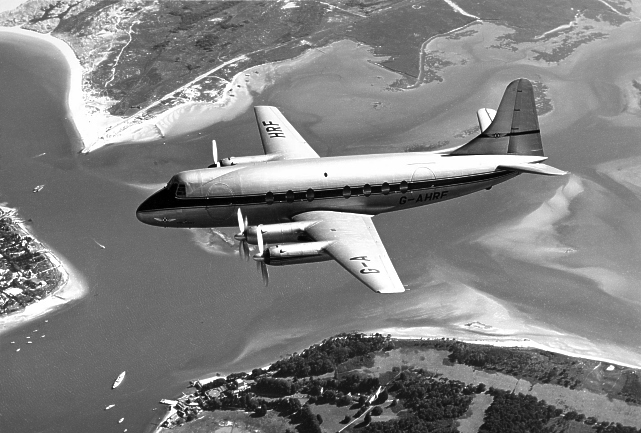
Prototype Viscount G-AHRF over Poole Harbour during an early test flight
Among the design proposals that they put forward during the next few years was for a short and medium range airliner,
suitable for use on the European and other routes which embrace the heaviest traffic and involve the largest scale of
business in civil aviation. It was described as 'a 24-passenger aircraft, powered by four gas turbine engines driving
airscrews'. That was in 1945.

The first turboprop flight in the world was on a modified Gloster Meteor fighter
In the same year, Rolls-Royce flew the first turbo-prop engines in the world, two modified Derwent turbo-jets named
'Trent' powering a Gloster Meteor fighter, and encouraged by the results began the design of the 'Dart' engine that
was to power the Viscount.

Vickers-Armstrongs VC1 Viking
Vickers-Armstrongs was one of several aircraft manufacturer's who had been following the Brabazon reports.
By the end of World War II their VC1 Viking was already looked on by Vickers as little more than an interim aircraft.
It had been developed from their Wellington bomber in order to fill the immediate post-war requirements of the airlines,
and although as a stop-gap it was quite adequate, its time was running out.
Their design staff under the leadership of Rex Pierson and his successor George (later Sir George) Edwards set about
creating an entirely new airliner for the World's medium-stage markets.
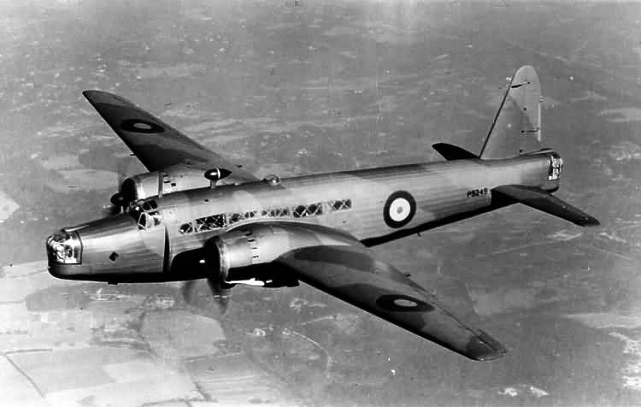
Vickers-Armstrongs Wellington bomber
Brabazon Committee
In 1942, during World War II, the United States and the United Kingdom agreed to split responsibility for aircraft
construction; the US would concentrate on transport aircraft while the UK would concentrate on their heavy bombers.
This would leave the UK with little experience in transport construction at the end of the war, a worrying development
given the production infrastruction that would now be useless. Moreover the massive infrastructure in the US would allow
them to produce civilian designs at low cost.

The Avro Lancaster was one of Britain's most successful World War II bombers
Starting in February 1943 a committee met under the leadership of Lord Brabazon of Tara in order to investigate the
future needs of the British civilian airliner market. The Brabazon Committee studied a number of designs and technical
considerations, and delivered a report calling for the construction of four general designs they had studied along with
members of the airlines BOAC - British Overseas Airways Corporation and BEA - British European Airways Corporation.
Type I was a very large transatlantic airliner serving the high-volume routes like London-New York, seating its
passengers in luxury for the 12-hour trip.

Douglas Dakota - DC-3 - C47
Type II was a feederliner intended to replace the DC-3 and de Havilland Dragon Rapide, although BEA suggested a
larger and much more capable design. Type II was later split into two designs, IIA was a piston-powered aircraft, and the
IIB was turboprop powered.

de Havilland DH.89 Dragon Rapide
Type III called for a larger medium-range aircraft for various multi-hop routes serving the British Empire.
Type IV was the most advanced of them all, a jet-powered 100-seat design. Added at the personal urging of one of
the committee members, Geoffrey de Havilland, the Type IV could, if the whole concept of a jet airliner could be made to
work, be able to replace the Type III outright, and many of the duties of the other planes in shorter routes.
The committee published versions of the report several times between August 1943 and November 1945, each time further
solidifying one of the types. In 1944, the Ministry of Supply started a tender process for contracts for all of these
planes.
After a short selection process the Type I was given to the Bristol Aeroplane Company and was produced as the Brabazon.
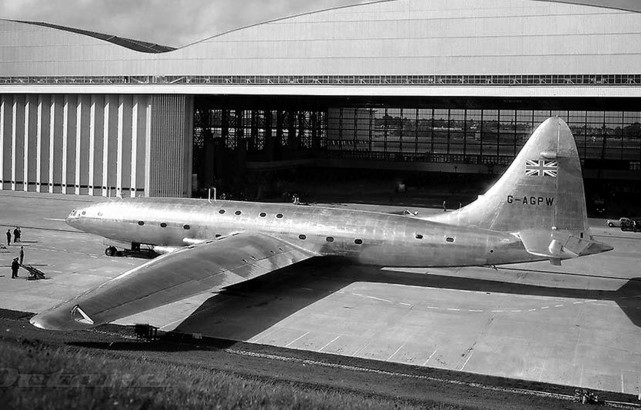
Bristol Brabazon
Type IIA became the Airspeed Ambassador.

Airspeed Ambassador
Type IIB became the Vickers Viscount and became the first gas turbine powered aircraft to carry fare paying passengers
on a scheduled service anywhere in the world.
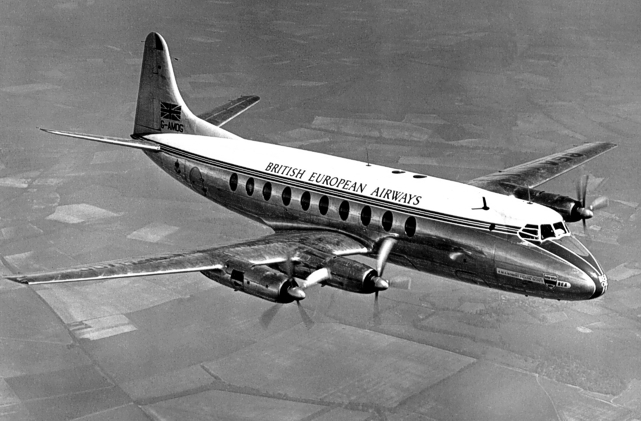
Vickers-Armstrongs VC2 Viscount
Type III also went to Bristol and became the Britannia.
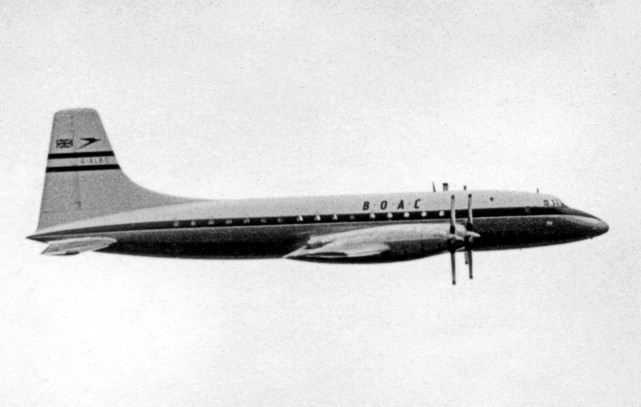
Bristol Britannia
Type IV went to de Havilland and would become the world's first jet airliner, the Comet.
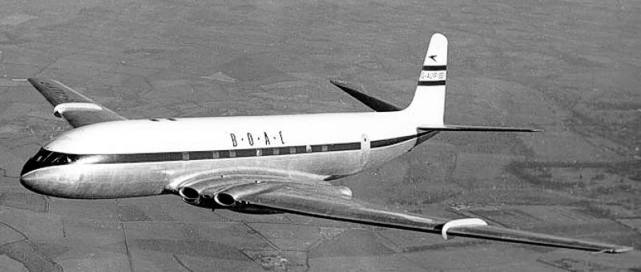
de Havilland Comet
In retrospect the majority of the Brabazon committee's suggestions were set up for failure. Invariably the designs were
tailored to a single company, BOAC or BEA, and therefore had less appeal to other airlines.
In addition they apparently failed to consider the side-effects of greatly increasing route capacity as these planes
would bring, and thought that their passengers would continue to be the rich, the only ones able to afford air travel at
the time. This led to a number of unrealistic requirements, and doomed the Type I Brabazon design to carry considerably
fewer passengers than it could, thereby making it too expensive to operate.
The only complete success of the Brabazon types was the Type IIB Viscount, which went on to be produced in the hundreds.
The Type IIA Ambassador was produced in only limited numbers, as the Type IIB Viscount was a far better design.
Only one Type I Brabazon was built, which was broken up along with the uncompleted second prototype.
The Type III Britannia should have been a success, but a series of delays before entering service forced it to compete
with newly-introduced jet designs from the US, with which it could simply not compare.
The Type IV Comet almost became an outstanding success, but three mysterious crashes grounded them all for long enough
that they too were outdated by the time they were able to re-enter the market.
By the 1960s it was clear that the UK had lost the airliner market to the US, and later designs
like the BAC 1-11, Hawker Siddeley Trident and Vickers-Armstrongs VC10 were unable to address this issue.

BAC 1-11

Hawker Siddeley Trident

Vickers-Armstrongs VC10
Another committee was formed to consider supersonic designs, STAC, and worked with Bristol to create the Bristol 223
design for a 100-passenger transatlantic airliner. However this was going to be so expensive to produce that the effort
was later merged with similar efforts in France to create the Concorde.

Concorde
 The Turboprop World-Beater
The Turboprop World-Beater
Lord Brabazon of Tara
The Right Honourable John Cuthbert Moore-Brabazon, 1st Baron Brabazon of Tara (8 February 1884 - 17 May 1964) was born
in England and became a British aviation pioneer.
He learned to fly in 1908 in France in a Voisin biplane. On October 30, 1909, flying a Short Brothers aircraft, he flew
a circular mile and won a £1,000 prize offered by the Daily Mail newspaper. On November 4, 1909 he made the first live
cargo flight by airplane when he put a small pig in a waste-paper basket tied to a wing-strut of his airplane.
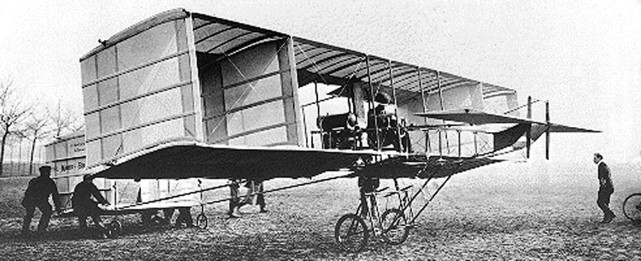
John Moore-Brabazon in a Voisin in 1909
With Charles Rolls (co-founder of the Rolls-Royce car manufacturing firm) he would later make the first ascent in a
spherical balloon made in England by the Short brothers.
On March 8, 1910 Moore-Brabazon became the first person to qualify as a pilot in Britain and was awarded Royal Aero
Club certificate number 1.
During the First World War he served in the Royal Flying Corps and was awarded the Military Cross. He was instrumental
in the development of military aerial photography.
Moore-Brabazon later became a Conservative Member of Parliament for Chatham (1918-29) and Wallasey (1931-42) and served
as a junior minister in the 1920s, then Minister of Transport and Minister of Aircraft Production in Winston Churchill's
wartime government.
Moore-Brabazon was elevated to the House of Lords as Baron Brabazon of Tara in 1942. In 1943 he chaired the Brabazon
Committee which planned to develop the post-war British aircraft industry.
He was involved in the production of the Bristol Brabazon, a giant airliner that first flew on September 4, 1949. It
was then and still is (as of 2004) the largest aeroplane built in Britain.
A keen golfer, Moore-Brabazon was captain of the Royal and Ancient Golf Club of St Andrews, the governing body of golf,
from 1952-1953. In 1906, he married Hilda Mary Krabbé, with whom he had two sons. At the age of 70 he was still riding
the Cresta Run.

